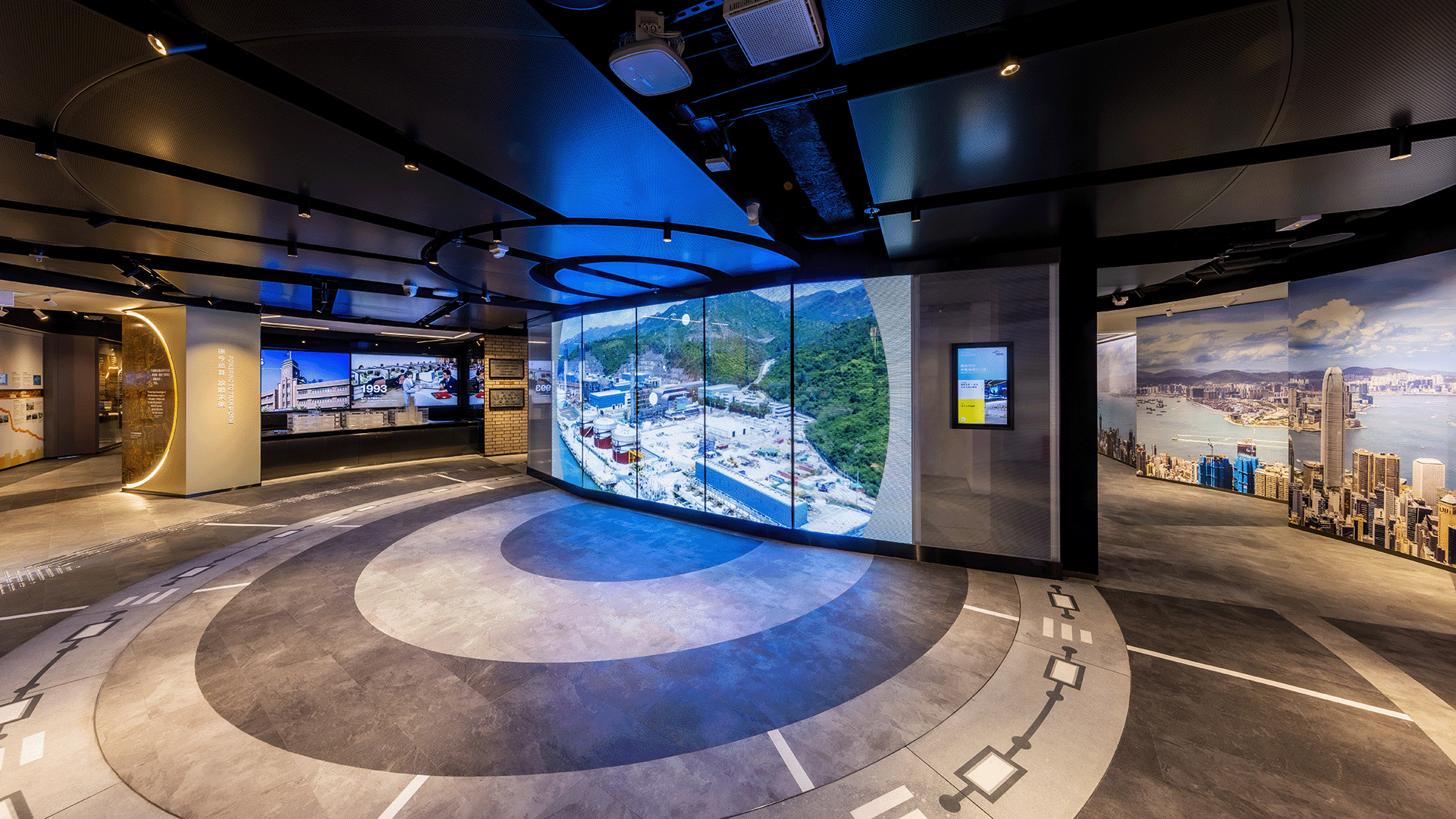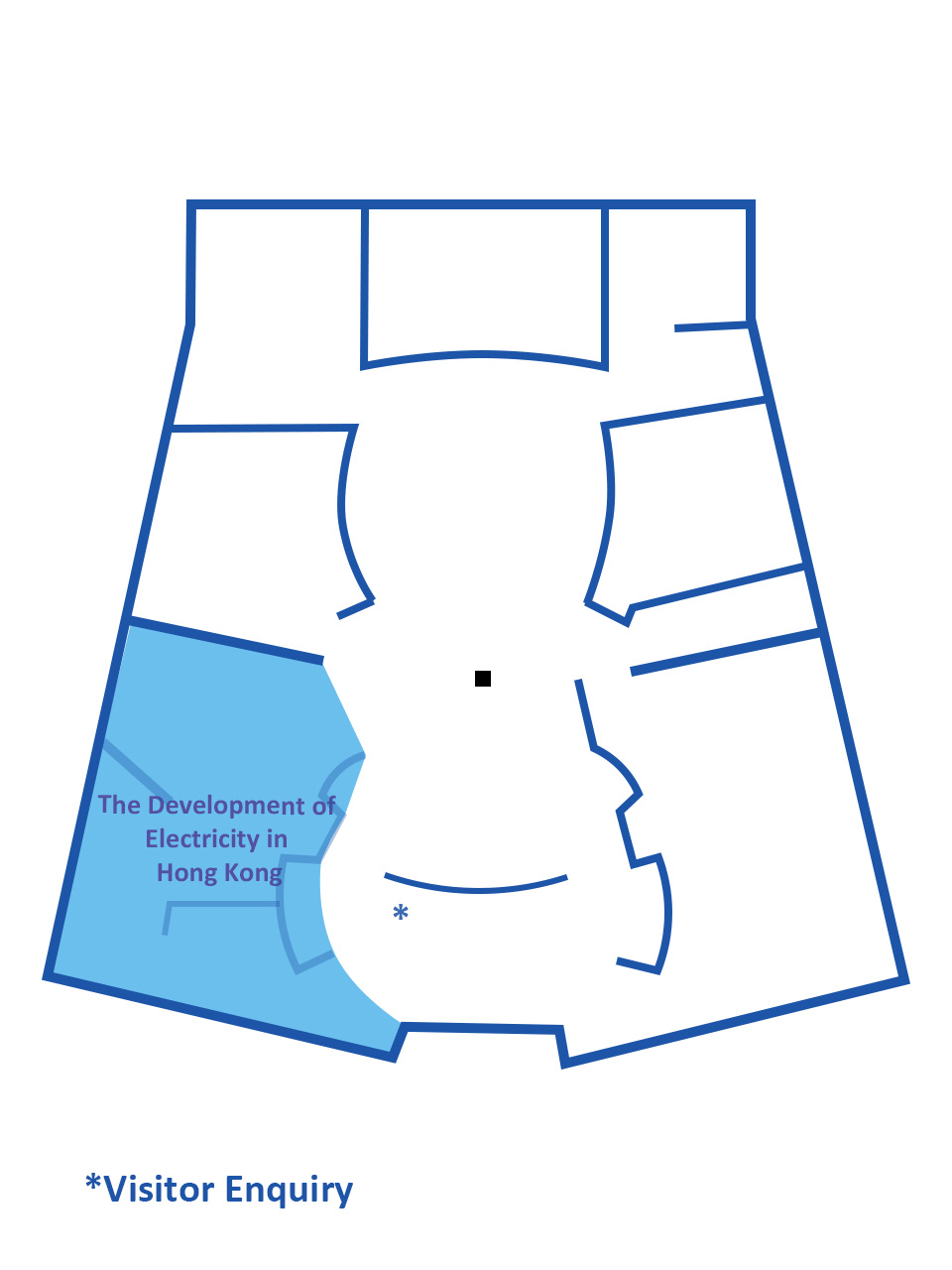The Development of Electricity in Hong Kong
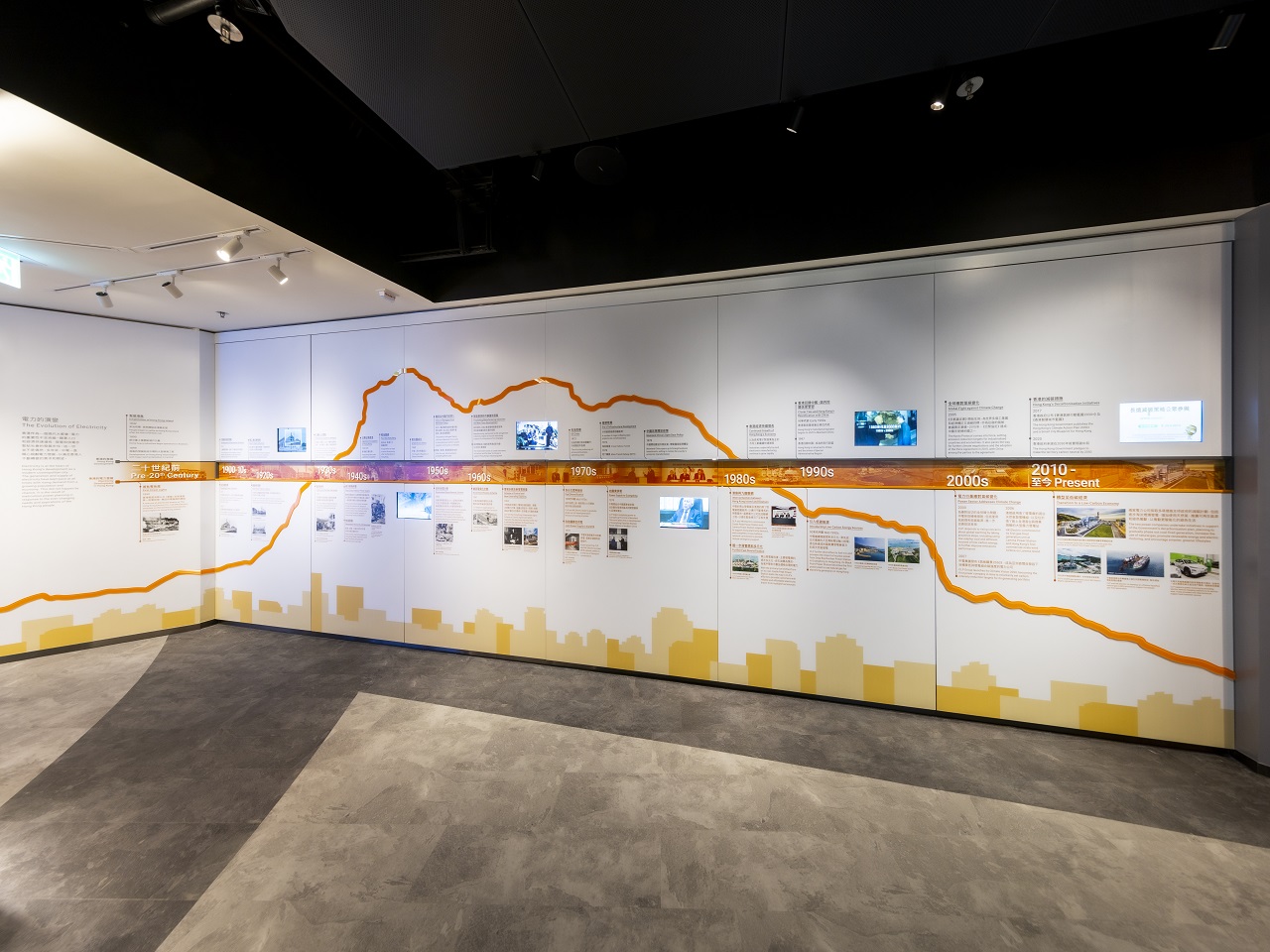
4. 【The Time Tunnel of Hong Kong and Electricity Development】
Electricity has been intertwined with the social and economic development of Hong Kong for more than 100 years. Ahead of you is a time tunnel, under the silhouette of the city’s iconic Lion Rock and divided into two parts by a timeline. The upper part shows milestones in Hong Kong’s development, while the lower part charts the history of electricity development in Hong Kong. This illustrates how electricity has been an invisible undercurrent in the winding river of time, continuously supporting Hong Kong’s social and economic growth.
Have you heard of the tragic Shek Kip Mei fire in 1953 when more than 50,000 people lost their homes? The tragedy spurred the government to build Hong Kong’s first public housing estate. CLP designed the power supply for this project, which became a blueprint for public housing developments around the region in the decades that followed.
This time tunnel also shines a light on the close energy supply relationship between Hong Kong and Mainland China. CLP began supplying electricity to Guangdong province in 1979, supporting the nation’s economic reform and opening-up. In 1985, the Chinese government and CLP joined hands to develop Daya Bay Nuclear Power Station in Guangdong, the nation’s first commercial nuclear power station and one of the earliest and largest joint venture projects since the reform and opening-up of the Mainland.
The Hong Kong SAR Government aims to achieve carbon neutrality by 2050. CLP is moving progressively towards net-zero electricity generation in line with that objective, while continuing to maintain supply reliability and meet future demand for energy.
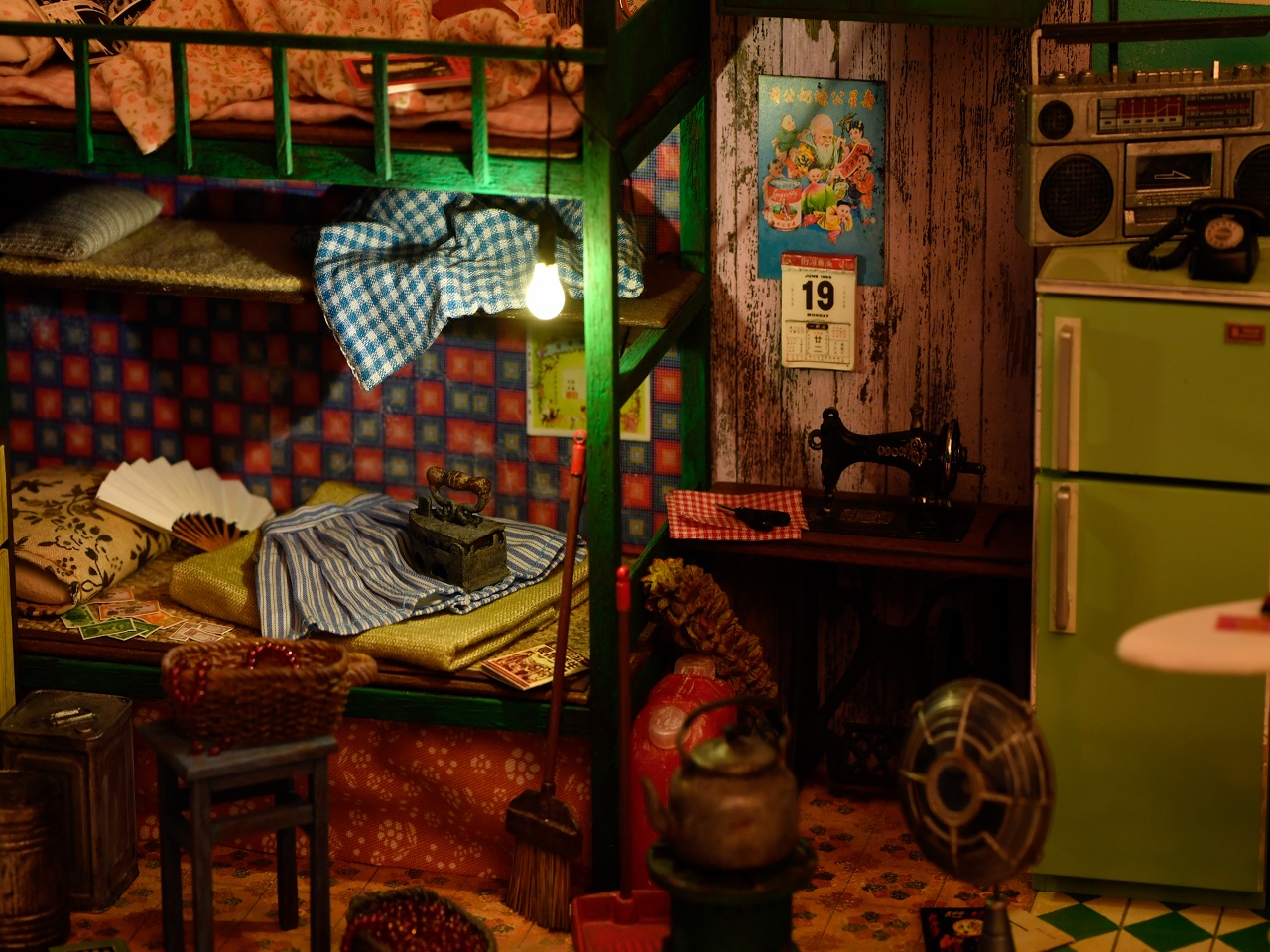
5. 【Miniature Artworks】
Electricity permeates every aspect of our daily lives, bringing innovation and convenience into the heart of our homes and our places of work. This exhibition area features four miniature artworks based on themes of home, cooking, transportation, and entertainment. They are titled ‘An Intimate but Precious Living Space’, ‘The Aroma of Mealtimes’, ‘An Electrifying Street Life’, and ‘Home Entertainment’. These artworks capture everyday sights from different eras through a cinematic distillation of time and space, providing a vivid reminder of how electricity lights up lives in so many ways.
We invited miniature artist On Tai to describe the ideas behind these four creations. Scan the QR code at the bottom right corner of the artworks to know more about the stories behind.
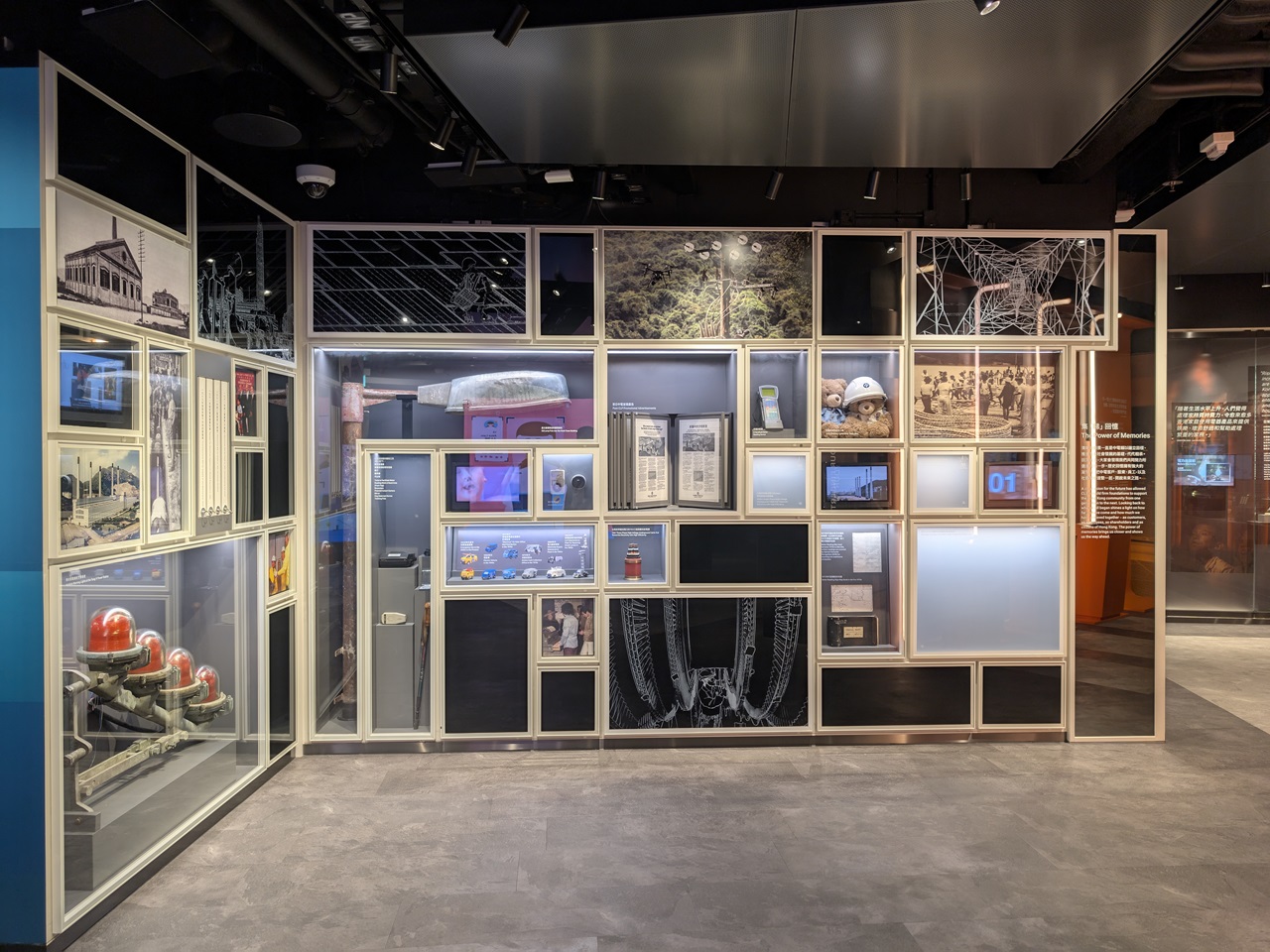
6. 【The Power of Memories】
Electricity makes life more convenient for us all, and CLP is involved in every step of the process. Let’s look at just a few CLP mementos of electricity’s evolution in Hong Kong.
Do you see those cute CLP centenary celebration teddy bears? Beneath the bears is the cross-section of an underground cable core which is made from conductive metals like copper or aluminium to reduce power loss during transmission. In dense urban areas of Hong Kong, underground cables are essential for an electricity supply.
Beneath the underground cable on the right is a hand-drawn map used by former CLP’s metering colleagues to indicate the locations of meters. Before the use of smart meters, our metering team had to go from community to community to record each customer’s electricity use and then issue bills. In the New Territories, identifying individual addresses and meters could be a challenge. Meters might not be inside homes but at the bottom of staircases in shared buildings, our metering team’s colleagues worked smart and would draw up maps to help other teammates find the correct location. In remote rural areas, meter readers would go out armed with canes, binoculars, and mirrors to read meters in difficult-to-access areas.
If you step to your left, you will see a row of pull-out display racks. Pull out the third panel and you will see that CLP once offered appliances rental service. In the 1960s, it costed HK$4 a month to rent a rice cooker.

7. 【A Power Journey】
Have you ever wondered where electricity comes from and how it is transmitted into your home?
CLP operates a vertically integrated electricity supply business in Hong Kong, covering electricity generation, transmission, and distribution, as well as marketing and customer service. In front of you is an extensive model that illustrates how electricity takes from generation, transmission, and eventually to homes and businesses.
The different power generation facilities in the model and on the screen represent CLP’s diversified fuel strategy, which includes the use of energy sources including natural gas, nuclear energy, landfill gas, and solar power.
On the left side of the model is the Offshore Liquefied Natural Gas Terminal (LNG Terminal) jointly developed by Hong Kong’s two power companies - CLP and Hong Kong Electric. This terminal is now in operation and significantly expands Hong Kong’s access to energy sources from around the world.
Expert maintenance work is crucial to ensure a safe and uninterrupted power supply. The video on your left gives you a glimpse of CLP’s maintenance regime, which includes using drones to inspect power towers for greater efficiency. During typhoons and other incidents of extreme weather, our colleagues from the control room, maintenance, and customer service work together around the clock to restore the power supply as quickly as possible wherever there is an outage. The determination and spirit of our teams help maintain a power supply with a world-class reliability rate of 99.999%, supporting the daily lives of Hong Kong people.
By providing a highly reliable power grid and generation facilities, along with an exceptional standard of maintenance, we are helping to lay the foundations for Hong Kong to become a smart city.
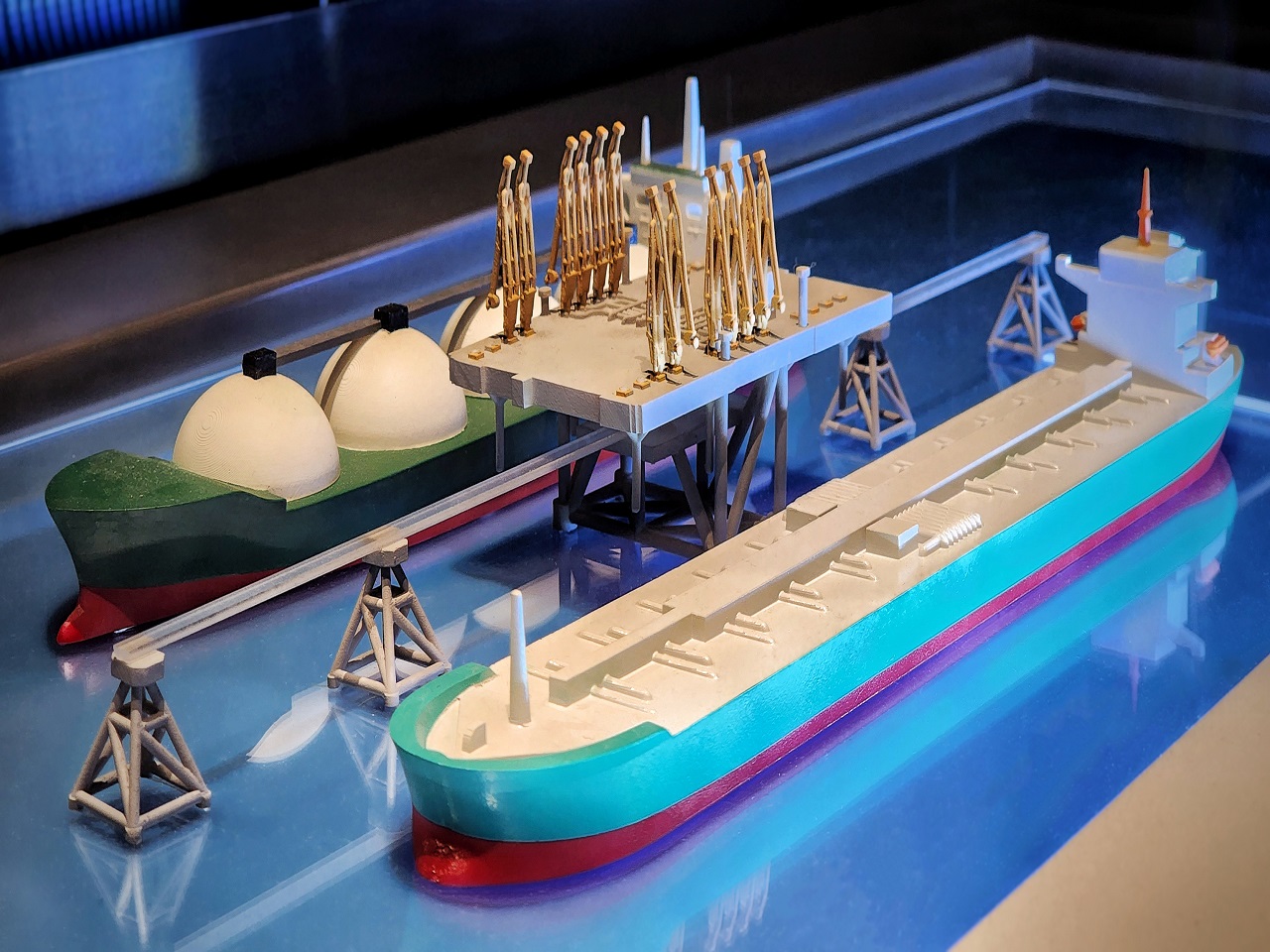
8. 【The Hong Kong Offshore Liquefied Natural Gas Terminal】
Natural gas currently accounts for 50% of Hong Kong’s fuel mix. The Hong Kong Offshore Liquefied Natural Gas Terminal (LNG Terminal), jointly developed by CLP and Hong Kong Electric, allows both power companies to buy LNG directly from international markets. This enhances Hong Kong’s energy security and strengthens its ability to source natural gas at competitive prices.
On the far left of the model in front of you, there are two ships and a terminal built at sea. These show Hong Kong’s offshore LNG terminal, located in waters to the east of the Soko Islands. To the right of the terminal is the Floating Storage and Regasification Unit, named Bauhinia Spirit.
The LNG bought from overseas arrives at the terminal, where it is regasified and transported through undersea pipelines to CLP’s Black Point Power Station to generate electricity. The electricity is then transmitted through high-voltage overhead lines to substations around Hong Kong, where its voltage is lowered so that it can be delivered safely to our customers.
As well as the offshore LNG terminal, we have two other sources for natural gas. One is the undersea pipeline extending from the Second West-East Gas Pipeline in Mainland China, and the other is natural gas from different gas fields in the South China Sea. This diversity of sources ensures a stable and reliable supply.
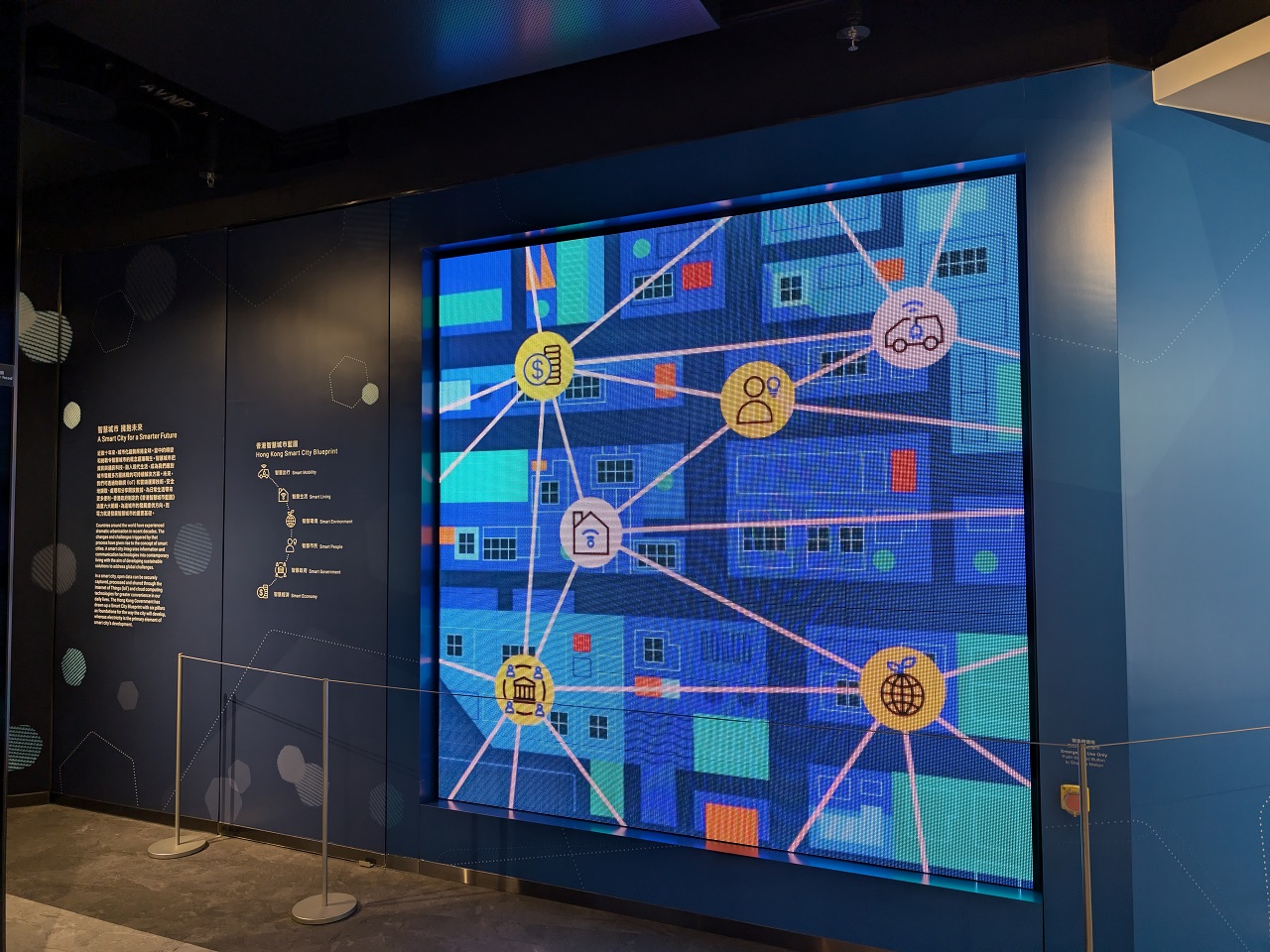
9. 【A Smart City for a Smarter Future】
Transforming Hong Kong into a smart city with the help of advanced technology is a vision shared by people in every walk of life. The Hong Kong SAR Government has drawn up the Smart City Blueprint for Hong Kong and Smart City Blueprint for Hong Kong 2.0 outlining six key areas for the creation of a smart city: Smart mobility, smart living, smart environment, smart people, smart government, and smart economy.
Electricity is a cornerstone of the development of a smart city because it supports and complements every technological step forward. CLP’s robust power grid and supply facilities mean Hong Kong is ideally positioned to move towards the goal of becoming a smart city. Look at the animation in front of you to find out how the creation of a smart city will enhance your life in ways you might not imagine, with futuristic features such as drones for food deliveries and driverless public transport.
Demand for electricity will increase as Hong Kong develops into a smart city, so meticulous and thoughtful energy planning is essential. We invite you to step into the next zone - called Planning Smartly - to find out more about the concepts and considerations involved in energy planning.

